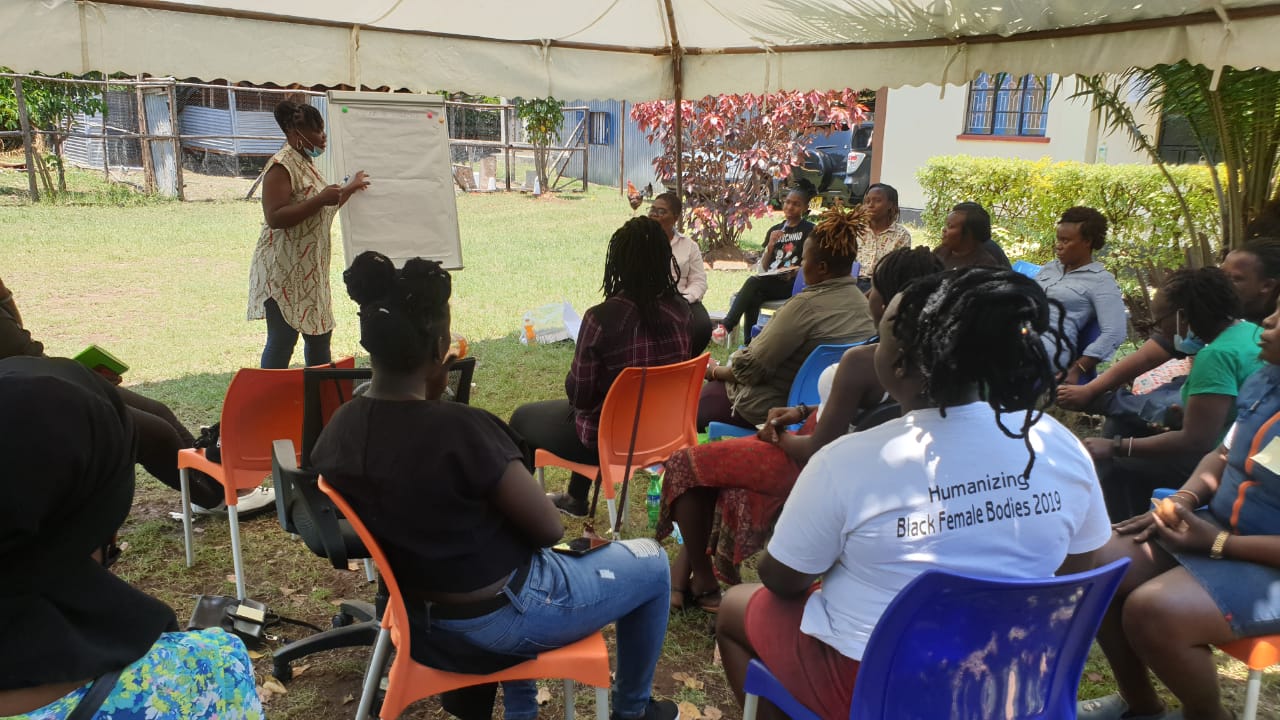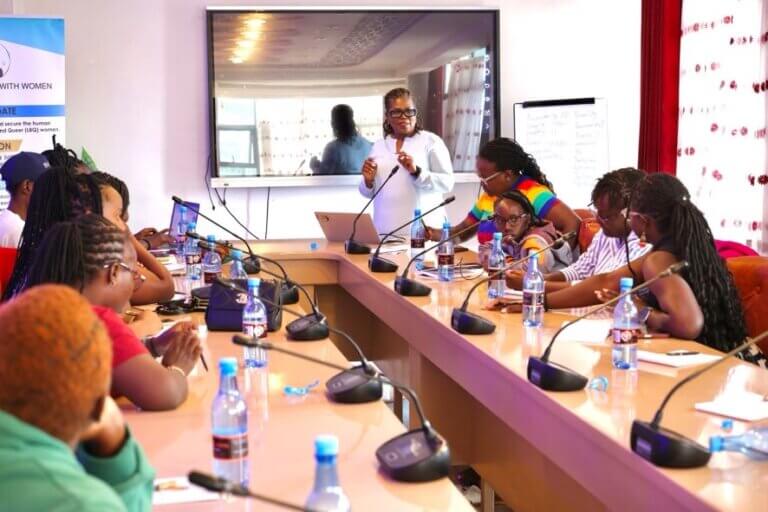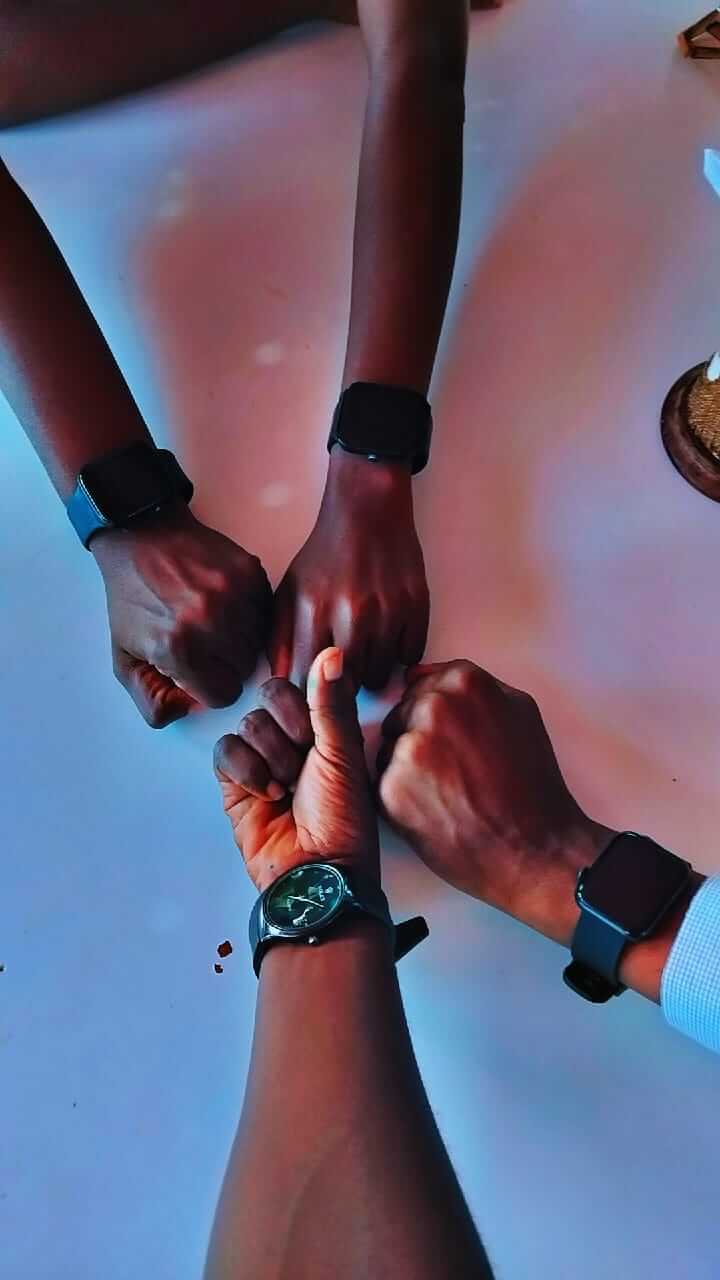Educational Session with LBQT persons on Violence
“Peace cannot be achieved through violence, it can only be attained through understanding. “Ralph Waldo Emerson
LBQT persons are largely excluded from the critical dialogue that informs development programs and investments and the benefits that are derived from them. This includes actions aimed at reducing violence against women and girls. As noted from our various discourse and sessions on violence, LBQT persons go through overt violence that widely stems from stigma and discrimination that manifests through denial of resources and even discriminatory laws. Part of our intervention to address the gaps in violence prevention and response; we had an educative session on violence, where we talked about the meaning of violence, types of violence, causes & consequences of violence, and the cycle of violence.
Violence is a complex phenomenon and thus there’s no clear definition, according to the World Health Organization, Violence is the intentional use of physical force or power, threatened or actual, against oneself, another person, or against a group or community, that either result in or has a high likelihood of resulting in injury, death, psychological harm, maldevelopment or deprivation.”
Gender-based violence is a phenomenon deeply rooted in gender inequality and continues to be one of the most notable human rights violations within all societies. Gender-based violence is violence directed against a person because of their gender. Both women and men experience gender-based violence but the majority of victims are women and girls.
Categories of violence
Interpersonal Violence
Interpersonal violence refers to violence inflicted by another individual or by a small group of individuals. LBQT person is always at high risk of multiple forms of interpersonal violence committed against them by colleagues, family members, neighbors, or intimate partners either from;
- Family and intimate partner – At the family level, discrimination and violence against LBQT persons likely derive from three inter-related sources: an intense pressure to marry and lead a heterosexual life, vulnerability to abuse and exploitation from family members, and vulnerability to forcible eviction and disconnect from family resources. They also experience Intimate Partner Violence (IPV) It’s important to note that LBQT persons who experience IPV have even less access to support services than cisgender heterosexual women.
- Community – At the community level, LBQT individuals go through overt stigma and discrimination that brings about issues such as “corrective treatment” in order for them to shed off their non-traditional way of life. In this context therefore LBQT persons can go through “corrective rape” from the community which is a practice that seeks to cure lesbians and bisexuals from non-normative sexuality by forcing them to have sex with a man
Structural Violence
LBQT persons are also at increased risk of structural violence compared to heterosexual and cisgender women. Institutions and societies may commit such violence against marginalized groups through punitive laws and discriminatory practices. Like in Kenya criminalization of same-sex conduct under articles 162 and 165 of the penal code violates the rights to equality, non-discrimination, human dignity, security, privacy, and health, all protected under Kenya’s constitution. These archaic laws impact the well-being and integrity of sexual and gender minorities (LBQT persons).
Types of Violence
- Physical Violence
Physical violence is the intentional use of physical force, used with the potential for causing harm, injury, disability, or death. This includes, but is not limited to: scratching, pushing, shoving, grabbing, biting, choking, shaking, slapping, punching, hitting, burning, use of a weapon, and use of restraint or one’s body against another person.
2. Sexual Violence
Sexual violence involves a sexual act being committed or attempted against a victim who has not freely given consent, or who is unable to consent or refuse. This includes, but is not limited to: forced, alcohol/drug-facilitated or unwanted penetration, sexual touching, or non-contact acts of a sexual nature. A perpetrator forcing or coercing a victim to engage in sexual acts with a third party also qualifies as sexual violence.
3. Psychological Violence
Psychological violence (also referred to as emotional or mental abuse) includes verbal and non-verbal communication used with the intent to harm another person mentally or emotionally or to exert control over another person.
What are the tactics of control that can result in violence among LBQT individuals?
- Isolating and threatening to “out you”:- LBQT persons face homophobia and transphobia from the general community and as a result, a perpetrator may use isolation from friends and families against a survivor to abuse them. The perpetrator may also threaten to out a victim to the family are always used as a tool for control.
- Using vulnerabilities to control: – A perpetrator may use a survivor’s vulnerability to immerse power and control to them.
- Using small communities:– perpetrators do this to ostracize the survivor
- Alcohol and drug abuse: – LBQT perpetrators are most of the time alcohol and drugs to sustain themselves and as a coping mechanism and as a result use this to exert power and control towards survivors.
Impacts of violence on LBQT persons;
The effects of these forms of discrimination and violence are far-reaching, reverberating at the individual, family, community, and national levels.
- Discriminatory laws, social stigma, an angry family, and abuse from a partner can lead to significant mental health issues like depression, substance abuse, and high levels of suicidal thoughts.
- Violence impacts on LBQT individuals socio-economic development because of loss of productivity
- Psychological scars often impede the establishment of healthy and rewarding relationships in the future.
- Physical effects such as ¸ injury, ¸ disability, ¸ chronic health problems (irritable bowel syndrome, gastrointestinal disorders, various chronic pain syndromes, hypertension, etc.)
- Psychological Effects can be both direct/ indirect ¸ Direct: anxiety, fear, mistrust of others, inability to concentrate, loneliness, post-traumatic stress disorder, depression, suicide, etc. ¸ Indirect: psychosomatic illnesses, withdrawal, alcohol or drug use.
- Rejection, ostracism, and social stigma at the community level
Cycle of violence
These are repeated pattern of behaviors which keeps survivors locked in abusive relationships. Identified the three-cycle of violence:
- Tension Building Phase-
The survivor feels: Angry, unfairly treated, hopeless, tense, afraid, embarrassed, humiliated, disgusted, depressed
Behavior: Nurturing, submissive, “walking on eggshells,” afraid to express feelings, may use alcohol and/or drugs to avoid a situation
Perpetrator feels: Tense, frustrated, disgusted, self-righteous, or jealous
Behavior: Verbally abusive, fits of anger, silent, controlling, arrogant, possessive, demanding, irritable, may use alcohol or drugs
- Violent Episode Phase
The survivor feels: Frightened, trapped, helpless, or numb
Behavior: May try to protect self, hit back, submit helplessly, getaway, or seek help
Perpetrator feels: Angry, enraged, “right,” jealous and/or frustrated
Behavior: Dangerously violent, has a deliberate desire to hurt or kill, out of control, irrational,
- Remorseful/Honeymoon Phase
The Survivor: Relieved, angry over the incident, resentful, guilty, hopeful, in denial over the seriousness of the incident
Behavior: Offers excuses for the batterer, may be withdrawn, tries to solve or prevent future incidents, and hopes/believes changes will last
Perpetrator: Apologetic, remorseful, forgetful about the degree of violence, self-righteous, unable to understand why the woman is still angry.
Behavior: Makes promises to change, blames her or others for the problem, may use alcohol or drugs as an excuse
All interventions to prevent and address violence towards LBQT persons should include ethical guidelines related to respect for persons, non-maleficent, beneficence, and justice.




